Of course, the definition of the breed group narrows the "circle of search", but to get closer to the truth, you need to study in detail the other external features of the pet.
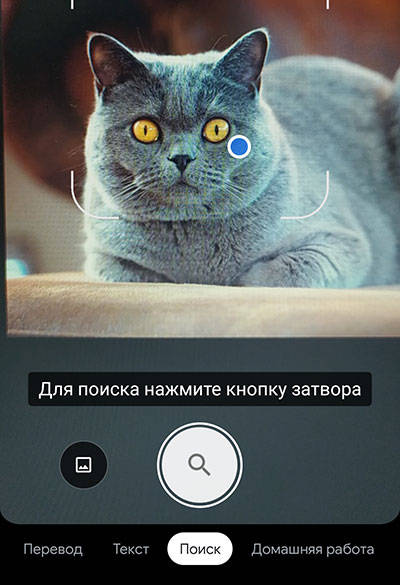
- Breed breeding
- Breed, as it is defined
- Noble bloodlines and their non-bred relatives: how to find out which clan your pet belongs to
- Determining a cat's breed by physical characteristics
- Siamese Color/Color Point
- Yandex.Alice – will be able to recognize the breed of cat
- Cat Scanner – cat breed identifier
- Color and coat
- Body features
- How to determine the breed yourself
- Hair type.
- Color
- Test one: external appearance
- Test two: The color and coat of the kitten
- By Character
- Which cats are considered pedigree and which are pedigree and how it is determined
Breed breeding
Generally, breed breeding (or selection) is aimed at fixing certain traits, by which we determine the breed of the cat. For example, Bengals – bright appearance, color, you can't confuse them. Or Persian – fluffy snub-nosed cloud.
In order to have such characteristics in offspring, cats and cats of such appearance are crossed. And then the kittens who best fit the breed traits go for breeding.
So we know who the kitten's ancestors are, purebred cats have a pedigree. The pedigree records all of a kitten's ancestors up to the 4th (or even 5th) tribe, specifying their breed and color.
Breed, as it is defined
We look at the pedigree, we see the breed of ancestors and we know that the kitten belongs to that breed. We look at it – yes, exactly)))
Because a cat can have all sorts of traits in its genes, of different breeds. Some kitten may be born looking like a certain breed. But it could have anything in its genes. And a cat that looks like a British cat can give birth to kittens that look completely different…
In the case of a pedigree cat this does not happen, if we breed a pedigree cat with a cat of the same breed, we will get kittens of the same appearance, there will not be a scatter on the traits.
For example, when I was a kid, I had a cat named Lisa, with an appearance similar to Siberian. And she gave birth to kittens of all kinds, once she gave birth to such a kitten, that looked like a Briton… In one litter there were kittens of different colors and sizes… The cat was a "non-breed", but her appearance was similar to the breed.
Noble bloodlines and their non-bred relatives: how to find out which clan your pet belongs to
Pedigree cats and their mongrels differ from each other not only by appearance and habits, but also by documents. That is why if one day you decide to take in a stray Persian with show exterior, keep in mind that you will not "go to exhibitions". Moreover, without documents confirming cat "personality" even the purest purr-furred cat automatically becomes invisible for felinological systems.
For closed breeds (when animals within a breed group are mated) a pedigree, feline ID card and veterinary passport are mandatory. In situations with open, in-progress breeds (when mating with other phenotypic individuals is allowed), the final verdict is rendered by the breeding expert.
Important: A cat's membership in an open breed is confirmed if the undocumented animal receives an "excellent" rating for exterior characteristics from three judges. As a result, an individual is recognized as a pedigree cat and receives a pedigree pedigree certificate without ancestors in the appropriate box.
Determining a cat's breed by physical characteristics
So, with cats with a package of necessary documents on their paws, sorted out. But what to do, if you have an adorable "podobrash" or an orphan cat, whose origin is a mystery? First of all, love the purr and provide him with comfortable living conditions. Well, if you still want to find out who is listed as an ancestor of your ward, it is enough to look closely at its appearance.
If you have a black or red "matroskin," feel free to skip this and subsequent paragraphs and proceed to read the next block, because such cats are found in the vast majority of breeds. Well, for owners of cats with "coats" of other shades there is a little useful information.
Siamese Color/Color Point
Distinctive features: light hair on the body + shaded muzzle, ears, paws and tail, as a consequence of acromelanism (incomplete albinism). Breeds of cats, standard of which this type of color is fixed: Siamese, Burmese shorthair, Thai, Seychelles shorthair, Munchkin, Peterbald, British, Scottish, Laperman, European shorthair, Don and Canadian Sphynx, Devon Rex, Balinese, Burma.
Yandex.Alice – will be able to recognize the breed of cat
Voice assistant Alice from the company Yandex can not only determine the animal on the image, but also tell a story, see the weather for tomorrow and even play with you in the "city".
- Install Yandex.browser on your computer. If you're using a smartphone or tablet, download this app.

- After installation, click on the purple circle.

- A dialog box with Alice will open in front of you.
- Here you can also read about her skills and abilities.

- Tell Alice to help you determine the cat's breed from the photo, or write it in the dialog.

- After uploading the image with the animal to the dialog, or by clicking on the button with the camera icon.
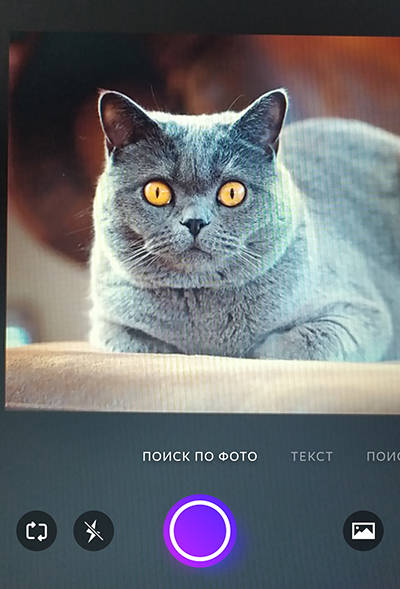
- In a few seconds Alice will give you your variant, and will also offer to look at similar search results.
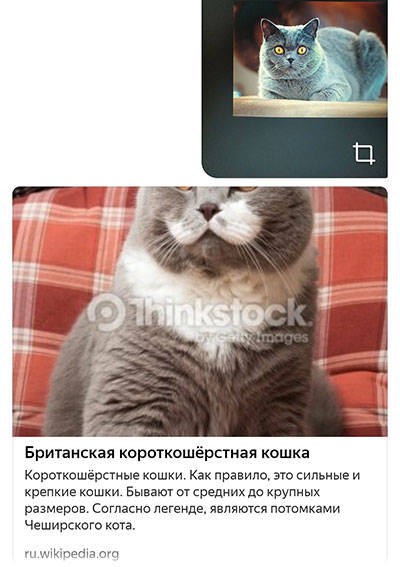
So with the help of the voice assistant you can learn a lot of new things for yourself.
Cat Scanner – cat breed identifier
Cat Scanner is an app for smartphones and tablets on Android and iOS operating systems. It's free to download and install, but if you buy a subscription, you get extra features like:
What do you need to do to find out which breed is in front of you?
- Download Cat Scanner and run it.
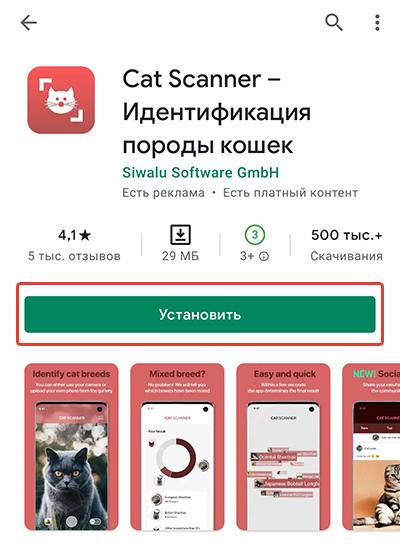
- Take a real-time picture of the very cat or cat whose breed you need to find out. Alternatively, you can upload a ready-made picture from the gallery. Pay attention to the fact that the photo must be of high quality and taken in good light. The better all the details can be seen, the more accurate the result you will get.
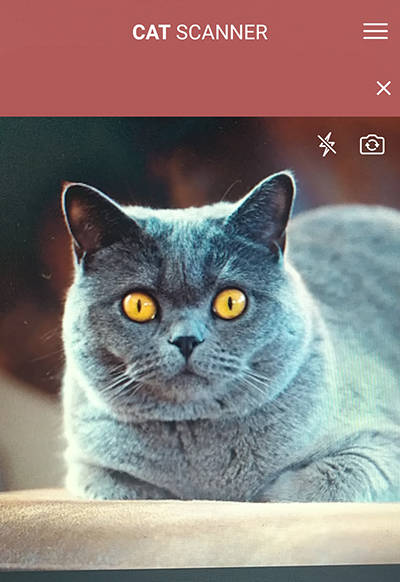
- After uploading the photo, the algorithms of the application will recognize the breed and provide you with the result.
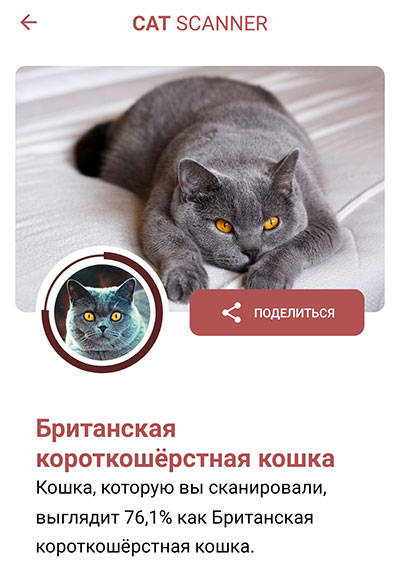
Some people think that the program cannot accurately determine the breed, while others claim that it provided the exact name. Try it, experiment.
Color and coat
A cat's particular coloring may indicate that her parents were pedigree animals. For example, a black muzzle, paws and tail speak of belonging to Siamese, Thai or Balinese cats. Bright spots or stripes that stand out clearly against the rest of the color are a sign of a Bengal, Savannah or Safari cat. Brown and chocolate coloring can be found in the Havana Brown. But if you are offered a brown Maine Coon kitten, you should not believe it. Maine Coon cats cannot be brown, chocolate, or tabby colors.
Coat can also vary from cat breed to cat breed. Long-haired, fluffy, and soft cats usually have more northern roots. These include Persian, Siberian, Somali cats, Maine Coon, Ragdoll and other breeds. Short-haired cat breeds are: Siamese, Oriental, Bombay and so on. There are even hairless pets. The most famous breed is the Sphynx, but there is also the Bambino and the Ukrainian Lion. Moreover, you can find curly animals, such as some types of rex. When you choose a kitten and want to determine its breed, you should pay attention to the color and length of hair of the animal in the first place.
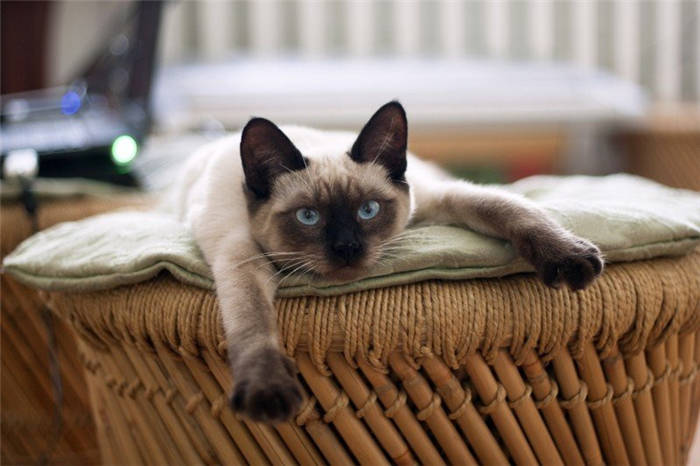
Body features
The next obvious attribute will be the features of the cat's physique and individual body parts. The same Maine Coon is the largest domestic cat, although as a small kitten it would be difficult to determine its size. But it is characterized by a square muzzle and large ears with tassels on the ends. Large triangular ears are also the hallmark of the Sphynx. This breed has large eyes and long tail, any deviations from these standards will already speak of the admixture of another breed in the pedigree of the kitten.
Deformed auricle, which folds the ear of the cat in half is quite common for lop-eared Scottish cat breeds. There are also breeds with curled or bent ears. The tail can also tell a lot about the cat. Many people are used to the fact that some breeds of dogs tend to have their tails cropped. However, among cats, there are those that are born with short tails right away, such as the American Bobtail, Japanese Bobtail and kimik. However, kimriks, unlike bobtails, also have shortened front paws, which together makes them more like rabbits, only without the long ears. Cat breeds such as the Munchkin, Skunk, Napoleon, and others may also have small paws.
In small kittens, it is more difficult to determine their future physique and therefore determine the breed, but it is also worth keeping in mind. Dense and stocky breeds of cats with round heads are: the British cat, the Bobtail, the Rex breeds and the like. More muscle and a more brutal muzzle can be found in kerls, Turkish cats and, of course, the Maine Coon. Flexible and slender breeds of cats, perhaps the most popular among people, are Siamese, Thai, Angora and Balinese. Such cats are very graceful and sophisticated, from which they have gained mad love.
Do not forget about such features as the shape of the nose, eye color and size, cheeks, bite and more.
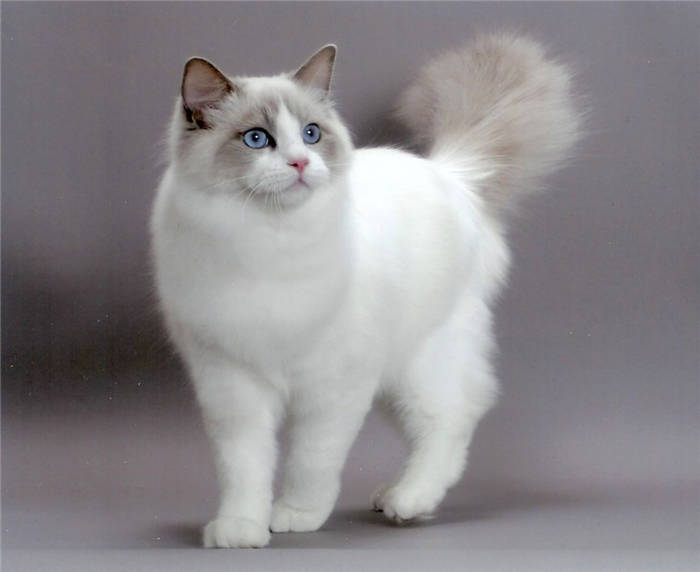
How to determine the breed yourself
Even if you manage to identify the breed group and body type of the pet, it is still too early to make unequivocal conclusions about the breed. It is necessary to study its appearance in detail, especially paying attention to the following features.
Hair type.
In addition to the difference in length, the coat of cats differs in its structure:
- "Plush" – Puffy hair combines with well-developed undercoat, giving the coat more softness and making it tactilely pleasant (British Shorthair, Scottish Fold, Exot etc.).
- Hard-haired type. – Thick, elastic and prickly to the touch hair. Occurs very rarely (at this time only in the American hardcoat).
- Curly or wavy coat – Forms curls or curls (Cornish Rex, Devon Rex, Selkirk Rex, etc.).
Pets with hair length up to 10 mm are generally considered hairless: they include Canadian and Don Sphynx, Peterbald, Bambino, Dwelfle etc.
Color
About the belonging to a particular breed can also say its color. Of course, among them there are many popular shades (e.g., black, white, red), which will not allow to come close to unraveling. But there are some that belong to few breeds:
- Blue – Only the British (short-haired and long-haired), Scottish (straight-eared and lop-eared), Russian blue, chartreuse, korat, and nibelung can boast of this color coat.
- Chocolate – A deep brown shade of hair of Havana, Burma and Chantilly-Tiffany.
- Color Point . – Is considered a classical Siamese color and is characteristic for cats from South-East Asia and hybrids created with their participation: Siamese, Thai, Burmese, Himalayan, Balinese, Tonka, Nevskaya Masquerade, Skiff-Toi Boba and Snow Shoe.
- Sandy – A rare coat color typical of Abyssinian and Somali cats.
- Tabby – is also called "wild" because it is the closest to the natural color of the historical ancestor of all domestic cats. Characteristic spots and stripes can be found in Egyptian Mau, Bengal, Siberian, Teuger, Serengeti, Caracetas and others.
- Chinchilla – A rare combination of white color with silvery or golden flecks. Characteristic of only three breeds: British, Scottish and Siberian.
Test one: external appearance
Look closely at your kitten and determine her eye type and color. Multicolored eyes may belong to an Angora cat. Here you should also take into account the coat. A fluffy in moderate Angora has a stable gene: several litters, even incompletely-bred, inherit both the eye color abnormality and the luxurious coat. And it's not just fluffiness, angora fur has a peculiar texture due to which a cat has no tangles.
If a kitten has a flattened nose even slightly, this indicates that Persian cats "marked" in the pedigree. The more pronounced the peculiarity of the nose, the "closer" by generation the purebred was.
Let's look at the cat's ears: if the ears are bent backward, this means that you have a descendant of a Curlew. If the ears drooped forward, you have brought home a Scottish Fold heir. It should be noted that it takes no earlier than 8 months to determine the signs and compare it to the photos of your pets. It is necessary to let the kitten to form, because some signs are recognized only after some time. For example, falling ears in the Scottish only a couple of months after birth.
If the baby has no tail, first make sure that it is not the result of an accident. If it is a natural defect, then you have a chicken bobtail or cymbeline in front of you. There may be several variations of breeds whose representatives are tailless.
Test two: The color and coat of the kitten
The easiest definition for those babies who have no fur at all. And if there are even one or two wrinkles on the body, it unambiguously indicates the participation of a sphynx.
First let's consider the peculiarities of the fur texture. If the coat is curly, curly as curls, then in front of us either Devon Rex or his neighbors in the breed.
If a cat's fur is long and silky to the touch, we can assume Persian representatives or Angora. True, these breeds are more effective to evaluate in conjunction with external signs.
Unusual coloring attracts a lot of attention at once, especially if we are talking about Siamese poinsettias. Brown paws, charming mask on cat's muzzle says distinctly that before you a descendant of a number of purebreds: Neva Masquerade, Siamese, Thai, ragdoll. Some character trait of your fluffy cat can help you here. For example, an unusually sofa-like, affectionate, blue-eyed, kind-hearted Siamese-colored kitten may well be a ragdoll crossbreed. And vice versa, willful, distinctive individual with the same color obviously belongs to descendants of purebred Siamese.
Another unusual color will also attract attention: a pronounced tortoiseshell or sand color. And if the color is also combined with an unusually fluffy tail, you see a Somali kitten. Long legs, elongated body and you can safely assume Abyssinian.
Blue or silvery gray hair will tell us about the participation of a Nibelung or British cat. But if the cute baby has spots, stripes on the coat, it clearly indicates that there are wild roots in the pedigree of the baby. Safari, Bengal, or another dozen of the rarest luxury feral cats could give rise to your baby's lineage.
By Character
The last method is character accounting, but felinologists note that it is the most unreliable. The behavior of any animal is shaped as it matures. In addition to genes, it is influenced by a variety of external factors, including housing conditions. Pets raised in a caring family are calmer, gentler, and more talkative, regardless of breed affiliation. Despite this, the breed standard still fixes certain behavioral traits on a cat.
- Choleric (Bengal, Oriental, Sphynx). Incredibly active type, who loves games and walks. Not prone to restraining emotions.
- Melancholic (Siamese). Very sensitive and resentful. Needs a lot of attention and patience.
- Sanguine (ragdoll, Maine Coon, Neva Masquerade). The most quiet and reserved type. Ideal for families with children. Relaxed to loneliness, but also not against the company. Not afraid to go into contact with strangers.
- Phlegmatic (Persian, British). Also very calm type, but more lethargic. He does not hurry to take the initiative and can meditate for hours in one pose without being distracted by external stimuli.
Note that such a division is still conditional. The same Siamese cats may well be the soul of the company, if you don't hurt their feelings and listen to their desires.
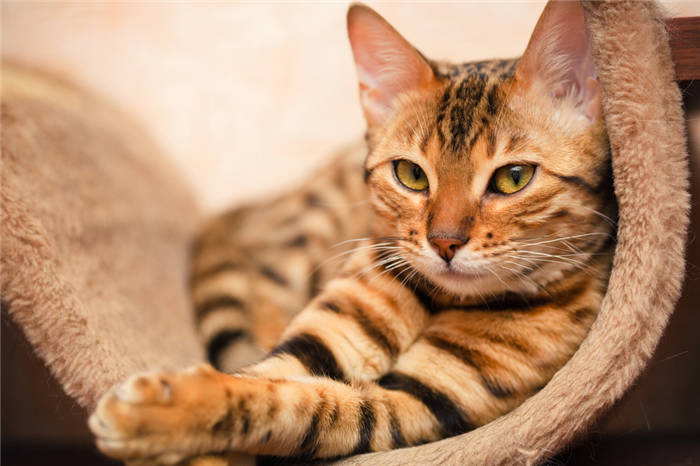
Determining the breed of a cat without documents is more like a fun game where you can confirm or refute your guess. If you're serious, try getting a DNA test. It establishes breed identity at the genetic level, which minimizes the chance of error. The problem is that not many clinics provide such service, and among samples for comparison you can find only really popular and widespread breeds.
Which cats are considered pedigree and which are pedigree and how it is determined
Owners of a kitten or an adult cat without documents confirming the animal's breed affiliation very often think about defining the breed and fixing it with official documents. This should allow the animal to become a producer of kittens and become a member of exhibitions, which allows, in addition to all attracting additional income.
However, if the documents were not issued to the kitten in the cattery, it is impossible to get it. It does not matter, that "by eye" you can accurately determine that the cat belongs to a certain breed. The fact is that without a pedigree the animal will be considered a pedigree in any case. Pedigree is issued by the felinology club and confirms that the kitten meets the standards of a certain breed. To know exactly how to proceed in this situation, you should read the instructions below.
1. Buying a kitten in a cattery, the owner will be absolutely sure of the origin of his pet. A cat's breed is defined by a number of traits characteristic of the genus. This includes the animal's behavioral features and exterior traits. Along with the kitten, documents will be attached, which record the pedigree with the names of three generations, the breed and color features.
2. If a kitten or an adult cat does not have a pedigree, then the animal will be considered a pedigree, even if it has a color characteristic of a certain breed. You can purchase a cat atlas in bookstores which will show the exterior of typical members of each breed in the feline family.
It is not possible to determine the breed of a kitten who has no documents, because the color of the coat may change with age. For example, the Nevsky Masquerade breed kittens are born almost always white and only with age their coat becomes darker.
4. Only experts can accurately determine the breed of the animal. To do this, it is enough to take close-up photos of paws, ears and tail. Based on these photos of the cat's exterior, a professional will put an end to the question of whether the cat belongs to a particular breed.






